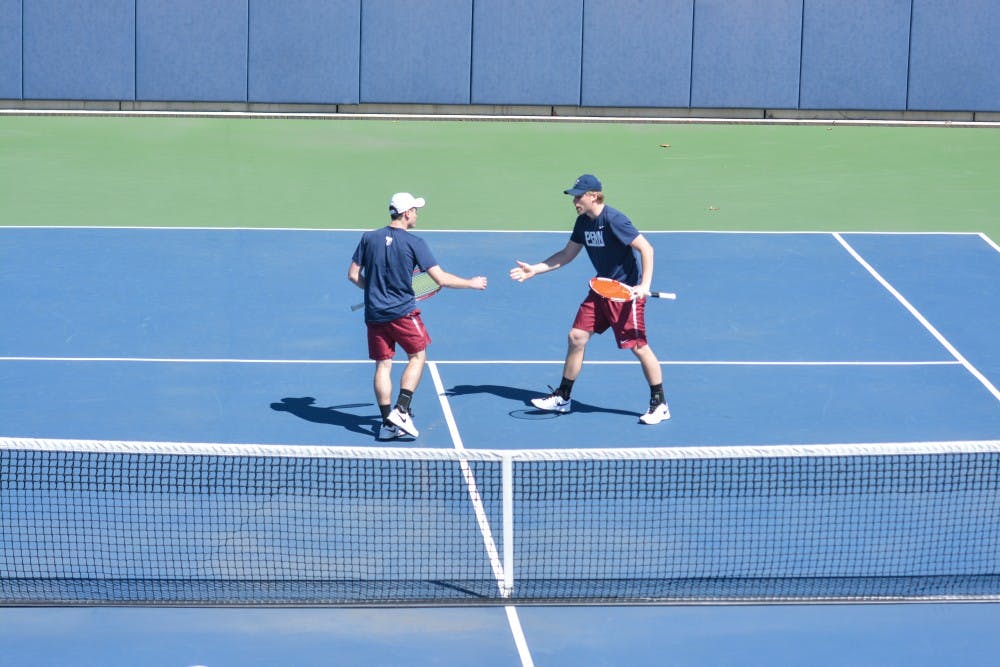The in-bounds area of a doubles court measures only nine feet wider than that of a singles court, but, in fact, that may be the least significant difference between the two games.
“Singles is more a game of mistakes, where doubles is more a game of winners,” coach David Geatz said. “In singles you can wear people down and just never miss balls, but in doubles I don’t think that’s enough.”
Even the fact that doubles matches are only one set in NCAA tennis changes the dynamics.
“You can lose the doubles point in 19 minutes, you’ve got to be ready from the very first ball,” Geatz warned. “The first big point is the first point.”
Where singles matches are a bout of wills, pitting one player alone against another, doubles can be thought of as a clash of tactics. Matches in doubles are won by the team who takes advantage of court position, and the team that controls the net more often.
What this means is that singles success will not simply translate onto the doubles court; the top two singles players are not always the team’s best doubles duo. For Geatz, the nuance of doubles only complicates the selection of his doubles lineup.
“They’ve got to get along. If you don’t like each other, you’re not gonna play good doubles,” Geatz said. “You’ve got to rotate [the teams] around, because it takes a little bit of time. I bet you there’s not a team in the country that has their doubles team picked out in the fall and they’re playing the same teams now."
Geatz went on to justify the science that goes into creating the perfect doubles lineup, which represents one of seven available points in tennis.
RELATED:
In final season with Red and Blue, Penn men's tennis Josh Pompan redefines leadership
Both Penn tennis teams edge Cornell after losing against Columbia
“The doubles point is more than a point … If you win the doubles point you believe you can win. It’s worth a point but it’s also worth momentum.”
It makes sense that the only team aspect of an otherwise individual sport can provide a team with the most momentum.
For senior captain Josh Pompan, playing doubles holds special significance in his Penn career. After never playing doubles during his time on the junior tour before coming to Penn, Pompan learned to adapt his baseliner style of play to more aggressive doubles tactics. Last season, Pompan debuted in the doubles lineup with 2017 graduate Thomas Spratt.
Working with Spratt demonstrated to Pompan that a contrast in playing styles makes for a potent doubles pairing.
“[With Spratt and current doubles partner Nicholai Westergaard], there were a lot of similarities,” Pompan said. “They were both all over the net, closing hard, putting away volleys. I, on the other hand, I’m better form the back [of the court]. I think that we compliment each other well, Nicholai and I."
This year, Pompan and Westergaard have proven to be a consistent force in the Quakers’ doubles roster, securing a team-high 10 wins at No. 2 doubles. For Pompan, he and Westergaard exemplify the notion that doubles partners need to share a bond off the court.
“He’s my best friend,” Pompan commented. “Me and Nicholai, we actually live next to each other, and so we’re able to talk about things, and get enthused before the match. We have a good bond, and that’s a huge advantage that we as a team have.”
For all the famous doubles pairings in tennis history, there is no one mold that shapes what a successful pairing looks like. But for Penn men’s tennis, the squad members can look to their senior captain for a pretty good blueprint.



